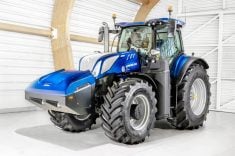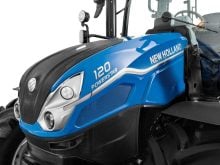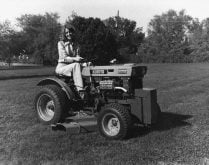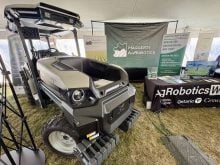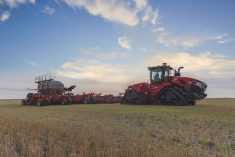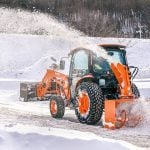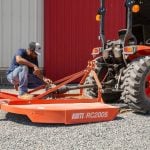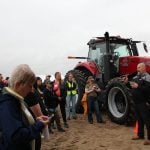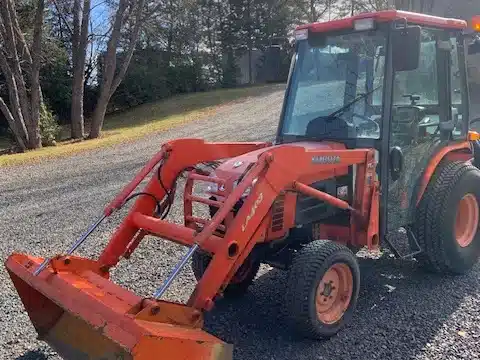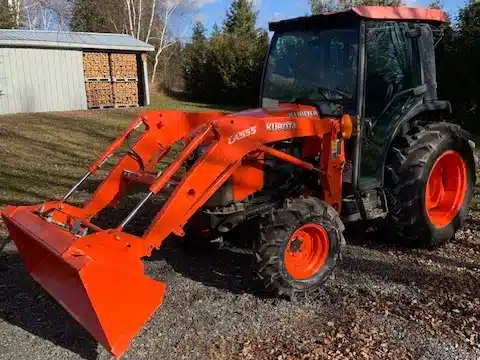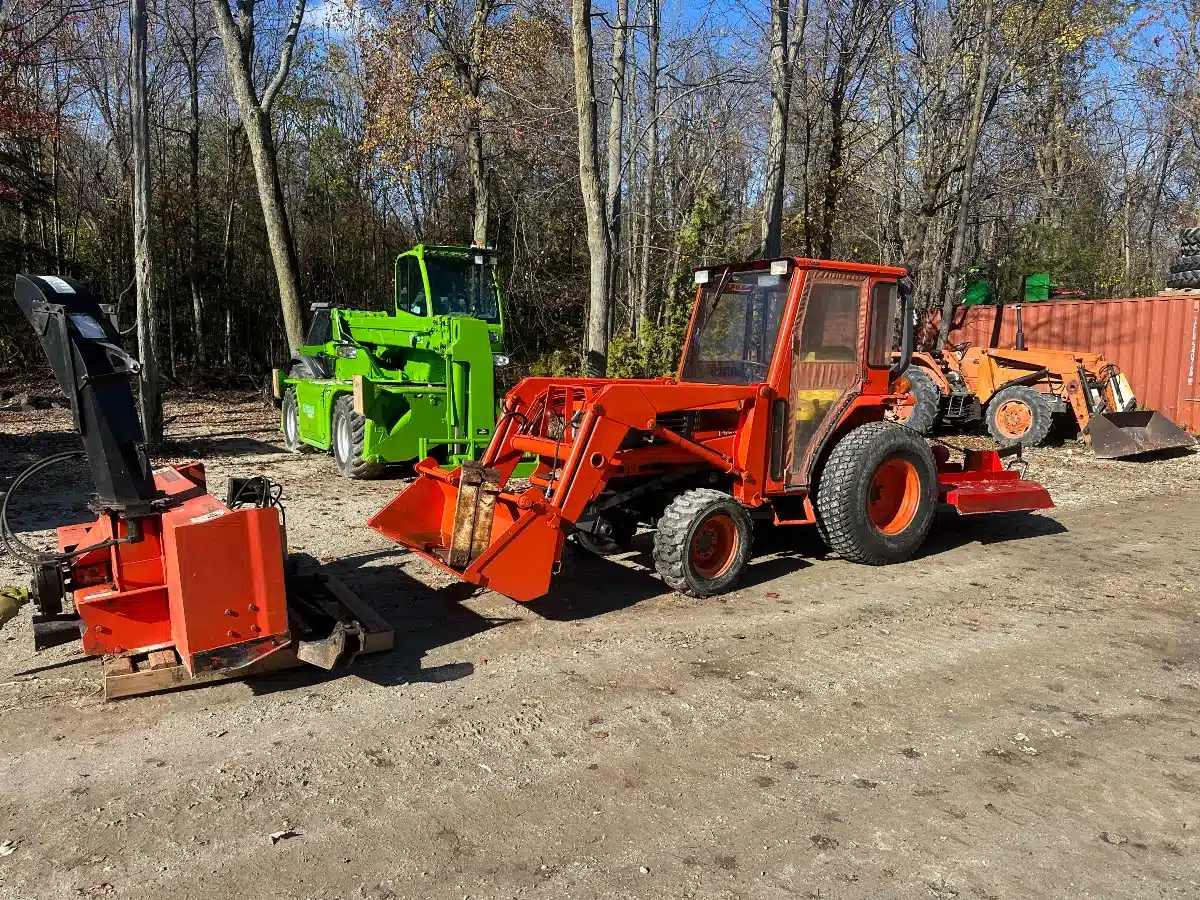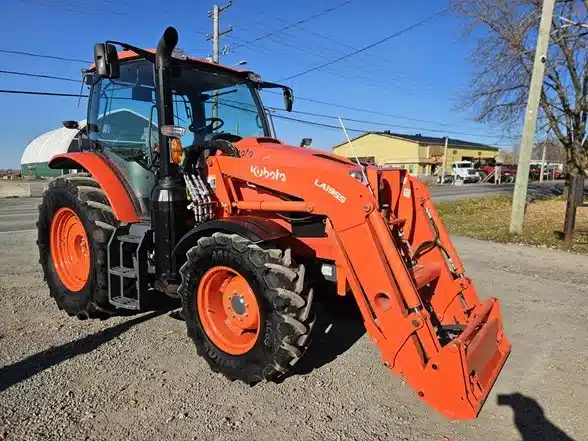This tractor has a lot of firsts to it,” said Jordan Wallace, as he motioned to Deacon, the Sabanto Steward-equipped Kubota M5 111.
In the sea of tractors and implements displayed at Canada’s Outdoor Farm Show last month, one might not immediately notice the technology draping the orange tractor at the GPS Ontario booth.
Why it matters: With the Sabanto Steward system, a producer can convert an existing tractor into a fully autonomous tool without investing in a new machine.
Read Also
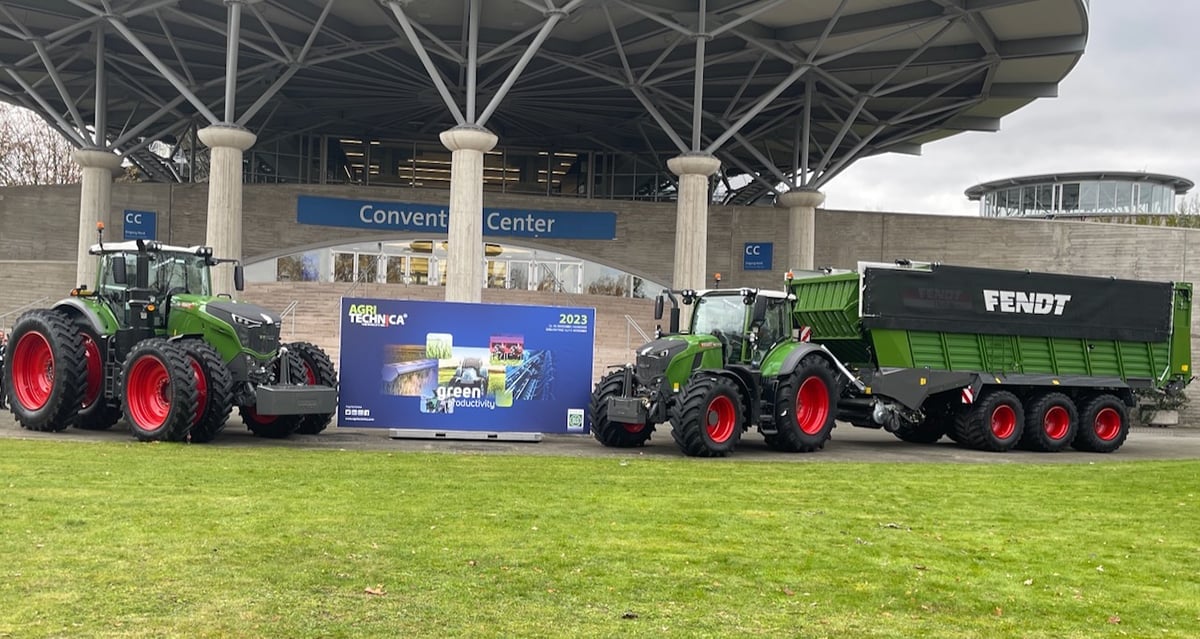
Canada to have increased presence at Agritechnica 2025
Interest in diversifying trade markets is taking more Canadian manufacturers to Agritechnica 2025, the world’s largest machinery show.
“It’s the first aftermarket installed level five autonomous tractor in Canada,” said Wallace, GPS Ontario’s advanced solution technician.
“It’s the first BX992 Trimble antenna in Canada, and it’s the first Kubota tractor used in autonomy Canada-wide.”
The Sabanto system can be retrofitted on an existing tractor, where it hooks into the computer controls, hydraulics and some mechanical operations of the tractor.
Wallace can program Deacon from an app on his phone or computer dashboard from anywhere worldwide. He can create field grids and do tasks involving specific equipment, as well as track fuel consumption, speed, PTO RPMs and sensor-related information.
“It doesn’t physically matter whether we’re on-site or not, as long as the vehicle is physically within the geofence and field boundaries,” he said.
There is an automatic kill switch if the tractor crosses the geofence boundary, and once finished, it alerts the producer.
Sensors detect objects in front of the tractor.
The operator can tow it from field to field, allowing it to work in tandem or separately.
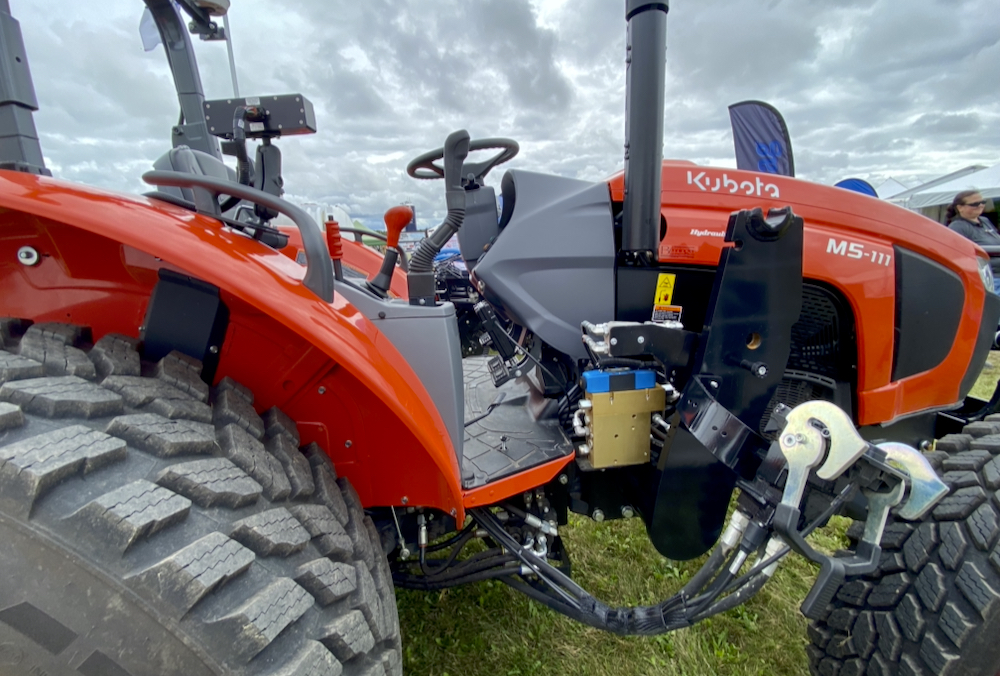
During late-summer demonstrations, the Sabanto mowed and raked hay fields while the farmer baled behind it.
These time-consuming labour-eating tasks are the low-hanging fruit of Sabanto’s capabilities. Wallace hopes to run strip-till and planting demonstrations to showcase the potential range of the technology.
“This particular grower we worked with (for the haying demo) was a goat dairy,” said Wallace. “They’ve got to manage the goats, and they’ve got to manage other tasks around the farm. To be able to send this tractor out and have it complete its job is simple. It becomes very energy-focused on efficiency.”
With a base cost of $65,000, the outfit comes with an annual subscription that covers the warranty and a cellular and GPS subscription, he said. Each tractor gets a name for the tracking software.
Wallace suggested the return on investment is two-fold. The Sabanto Steward turns existing tractors into autonomous tools with minimal investment compared to purchasing new ones. Additionally, it provides a labour savings cost of, at minimum, a single employee, offsetting the initial investment and providing a year to a year-and-a-half ROI.
As a bonus, Wallace says the tractor doesn’t call in sick, never leaves early, and will work through any weather and timeline outside of a refuelling break.
“We wanted to pursue this technology partly because GPS Ontario is usually a leading endeavour in precision agriculture,” he said. “And autonomy and labour force shortages are a big deal right now.”
Wallace appreciates Sabanto’s current focus on smaller tractors under 200 horsepower, which lowers compaction potential and promotes healthy soil structure.
He admits the system isn’t perfect. It isn’t yet able to communicate with implements and alert if there are issues. Sabanto is working on software to remedy that.
If farmers work with older analog implements, the tractor offers the same service as a worker in the driver’s seat, said Wallace.
“It’s about preserving the land. It’s about being efficient in agriculture. It’s about maximizing the time we have available to us with the labour shortage and the workforce we do have available.”




